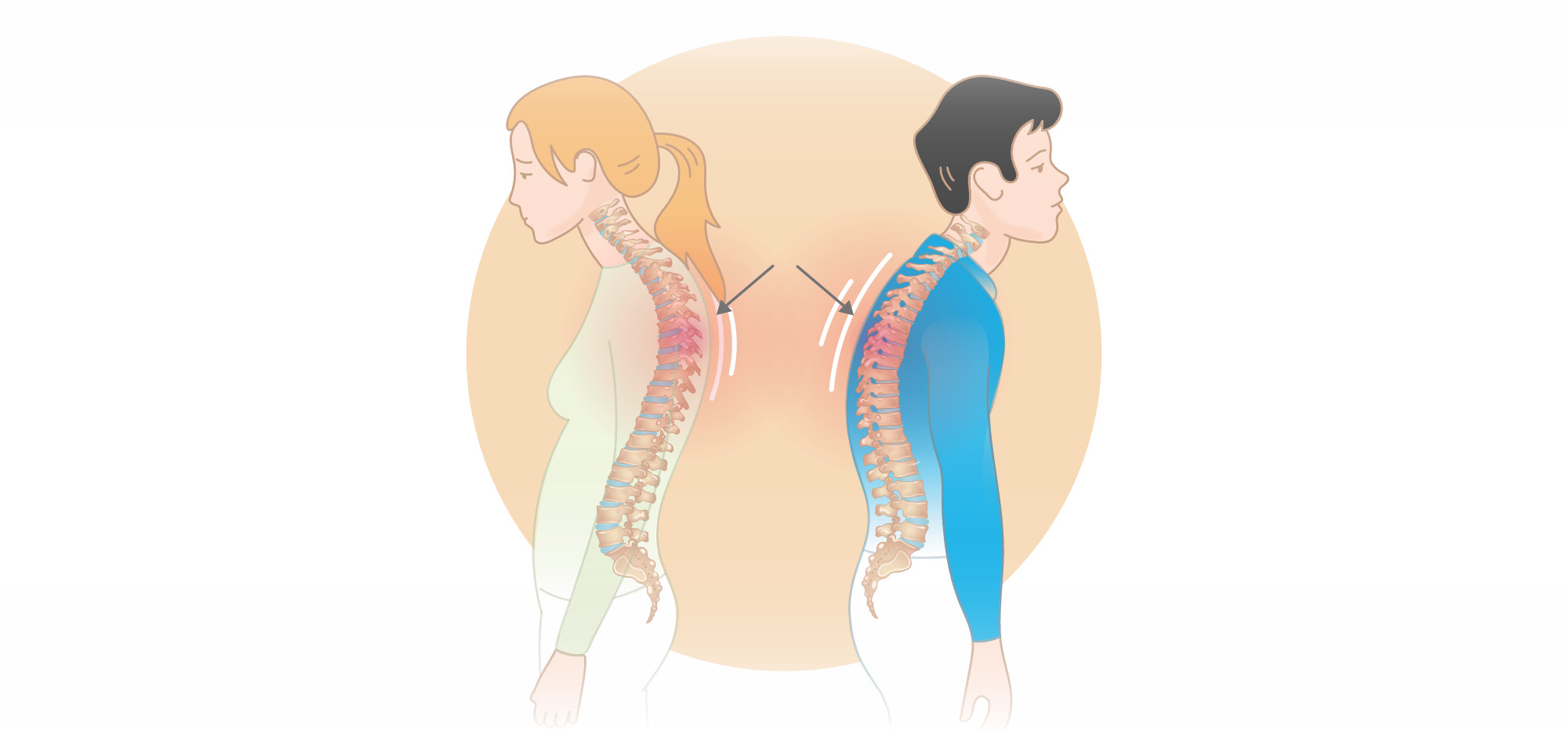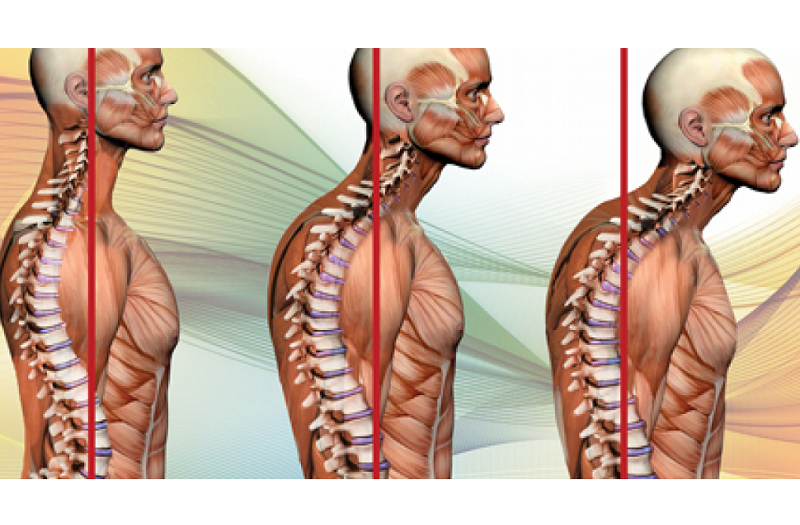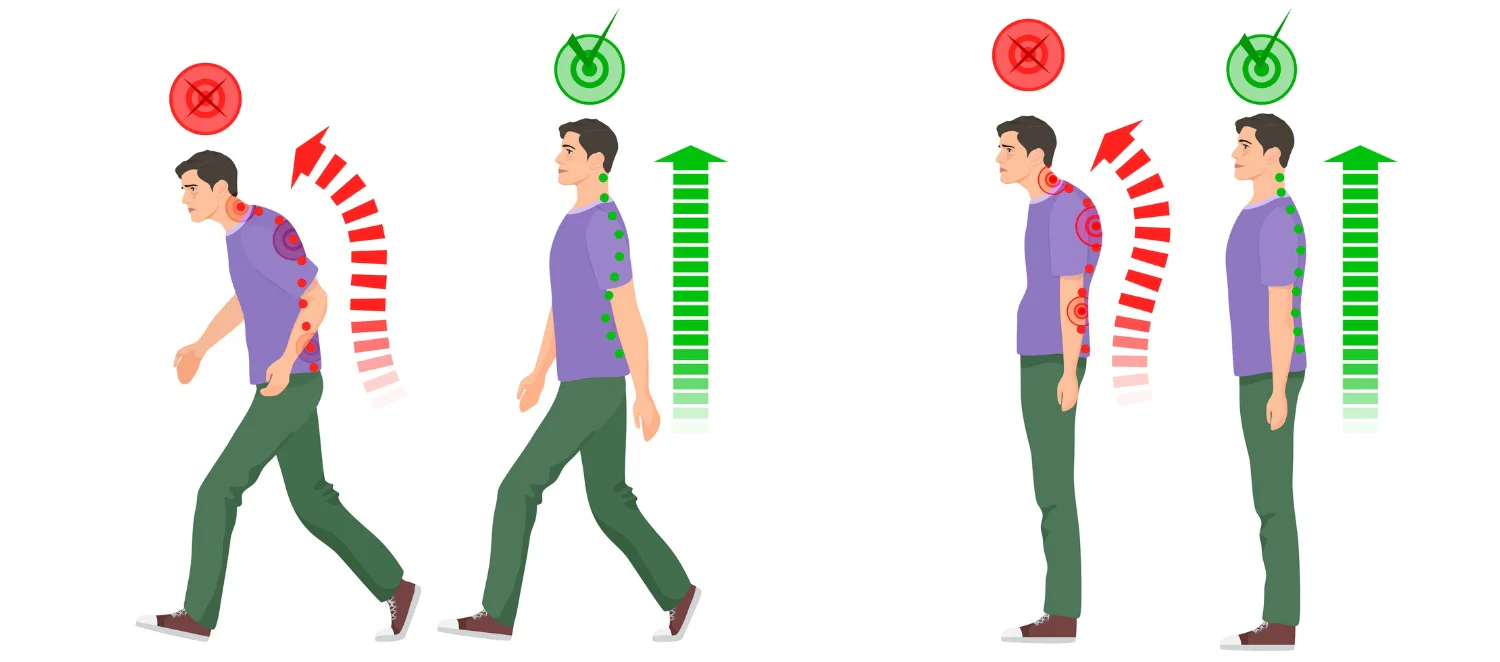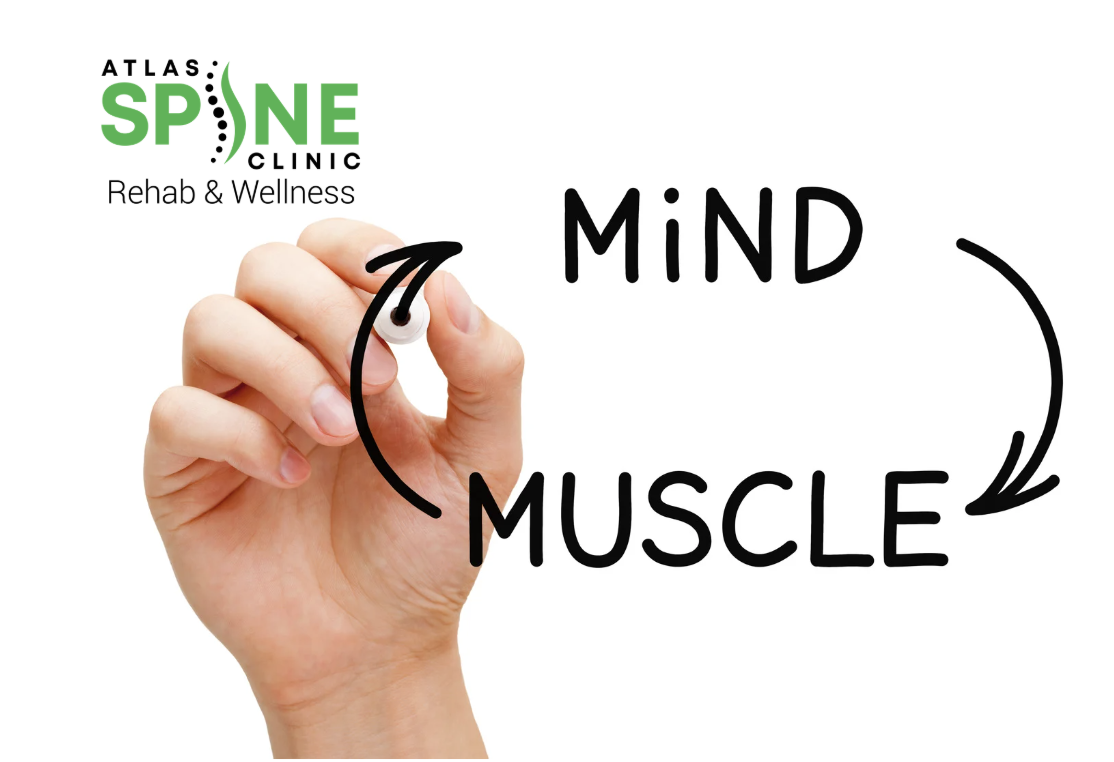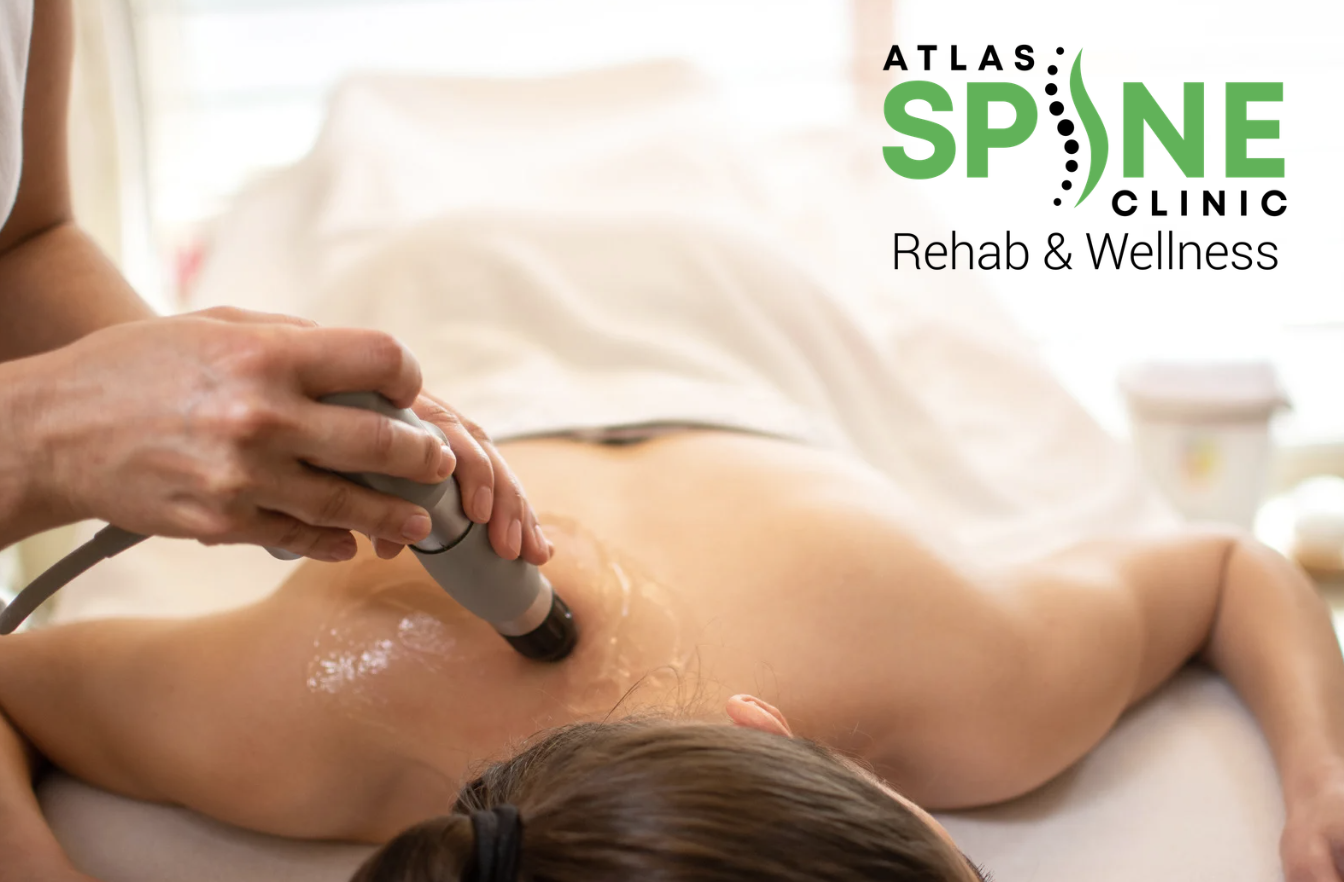Have you ever noticed a small hump forming at the base of your neck? Maybe it’s something you’ve spotted in the mirror, or a loved one pointed it out.
You’re not alone—this common condition, known as dowager’s hump, affects millions of people. But what exactly is it, and why does it happen?
Let’s break it down for you—no complex medical jargon, just clear, practical information you can use.
What is a dowager’s hump?
A dowager’s hump also known as kyphosis, neck hump, or hunchback posture is a forward rounding of the upper spine. This causes the neck and shoulders to slouch forward, leading to a noticeable hump at the base of the neck
While it’s commonly associated with older adults, anyone can develop it including young adults. In today’s tech-driven world, where we constantly hunch over screens, the posture-related causes of this condition are becoming more common than ever.
If you’re unsure whether you have a dowager’s hump, try this simple test:
- Stand sideways in front of a mirror.
- Look at your upper back and neck.
- If you notice a rounded protrusion at the base of your neck and your head leans forward, it may be a sign of a developing dowager’s hump.
Other symptoms can include:
- A stiff or achy upper back and shoulders
- Reduced flexibility in your spine
- Headaches or tension in the neck
- A constant feeling of strain in your shoulders
- Difficulty standing upright for long periods
What causes it
Dowager’s hump doesn’t just appear overnight. It’s usually the result of gradual changes in the spine due to posture, aging, or underlying medical conditions. Here’s a breakdown of the most common causes:
1. Osteoporosis
Think of your spine as a stack of building blocks. Now, imagine some of those blocks becoming brittle and collapsing. That’s what happens when osteoporosis leads to small spinal fractures.
These fractures cause the vertebrae to compress and tilt forward, making the upper back curve more than usual.
Mostly, women over 50, especially after menopause when bone density naturally declines have the most risk of dowager’s hump.
Strength training, calcium-rich foods, postural correction and vitamin D can help keep bones strong. Which will prevent dowager’s hump.
2. Degenerative Changes in your Spine
As we age, our spine slowly changes, discs shrink, joints stiffen, and ligaments lose flexibility. This can make the upper back round forward, leading to a visible hump.
Arthritis, past spinal injuries, or years of poor posture can speed up this process.
Regular movement, stretching, and proper posture can slow down spinal degeneration.
3. Underlying Bony or Ligamentous Pathologies
Certain spinal conditions, infections, or tumors can alter the shape of your spine. If ligaments around the vertebrae become too tight or calcified, they pull the spine forward, making the hump more noticeable.
This is less common but should be checked by a doctor if the hump appears suddenly or comes with severe pain.
If your hump grows rapidly, causes severe pain, or affects movement, it’s high time you should consult a specialist.
4. Congenital Problems
Sometimes, the spine doesn’t develop properly before birth, leading to Thoracic spine curvature or abnormal curvature as a person grows. This is rare but can result in a noticeable hump in early life.
Most congenital spinal issues are diagnosed in childhood and may require physical therapy or medical intervention.
If caught early, physical therapy and posture correction can prevent it from worsening.
5. Scheuermann’s Kyphosis
Unlike posture-related dowager’s hump, Scheuermann’s kyphosis happens when the spinal vertebrae grow into a wedge shape instead of a rectangle. This leads to a rigid, rounded upper back—often appearing in teenagers.
Unlike posture-related hunching, this condition is harder to correct with just exercises and may require medical supervision.
Early Detection is Key. If your teen has a slouch that won’t be corrected, check with a doctor to rule this out.
How to get rid of a dowager’s hump
If you’ve noticed a hump forming at the base of your neck, the good news is that in many cases, it can be improved or even reversed with the right approach. Whether the cause is poor posture, weakened muscles, or spinal changes, consistent effort can make a significant difference. Here’s how to start correcting it.
1. Strengthen Your Upper Back and Neck
A dowager’s hump often develops due to muscle imbalances—weakened upper back muscles combined with overly tight chest and neck muscles. Strengthening the right areas can help pull the shoulders back and restore a natural posture.
Effective Exercises:
- Chin Tucks – Stand or sit tall, gently tuck your chin in without tilting your head up or down. Hold for five seconds and repeat ten times daily.
- Scapular Squeezes – Squeeze your shoulder blades together and hold for five seconds. Repeat three sets of ten.
- Wall Angels – Stand with your back against a wall and move your arms in a slow, controlled “snow angel” motion. This helps improve upper back mobility.
By strengthening these muscles, you train your body to hold proper posture naturally, reducing the prominence of the hump over time.
2. Stretch to Improve Flexibility and Mobility
Stiffness in the chest, shoulders, and neck can pull your body forward, worsening the hump. Stretching these areas daily can help bring your spine back into alignment.
Best Stretches:
- Doorway Pectoral Stretch – Stand in a doorway with arms at a 90-degree angle and lean forward slightly. Hold for 20-30 seconds to open up the chest.
- Upper Back Stretch – Sit or stand, clasp your hands in front of you, and push them forward while rounding your upper back. Hold for 20 seconds.
- Cat-Cow Stretch – Move between arcing and rounding your back while on all fours. This improves spinal flexibility and reduces stiffness.
These stretches help release tension in tight muscles, allowing your posture to return to a more natural position.
3. Correct Your Posture Throughout the Day
Poor posture is often a habit rather than a fixed condition. Fixing it requires conscious daily effort.
- Align Your Head and Shoulders – Imagine a string pulling you up from the top of your head. Your ears should align with your shoulders, not lean forward.
- Check Your Sitting Position – Avoid slouching when using a computer or phone. Keep screens at eye level and sit with a straight back.
- Use a Supportive Chair – If you spend hours sitting, invest in an ergonomic chair that promotes good posture.
Making small adjustments to your daily habits can prevent the hump from worsening and help reverse it over time.
4. Maintain a Healthy Weight
In some cases, excess fat deposits around the upper back can contribute to the appearance of a hump. Maintaining a healthy weight through balanced nutrition and regular activity can reduce unnecessary strain on the spine.
- Focus on anti-inflammatory foods like leafy greens, fatty fish, and nuts to support bone and joint health.
- Engage in regular movement such as walking, yoga, or strength training to improve posture and reduce fat accumulation.
Weight-related humps may not fully disappear, but losing excess fat can help reduce their prominence.
5. Improve Bone Health to Prevent Further Progression
If osteoporosis or spinal degeneration is a factor, strengthening bone density can help prevent further curvature.
- Get enough calcium and vitamin D through food or supplements.
- Strength training regularly to stimulate bone growth and prevent fractures.
- Get a bone density test if you’re at risk for osteoporosis.
If osteoporosis-related fractures are present, consulting a doctor for bone-strengthening medication or treatment options may be necessary.
6. Seek Professional Guidance If Needed
If your dowager’s hump is severe, causing pain, or not improving with home exercises, a physical therapist or chiropractor can provide tailored treatment.
- Physical therapy can focus on strengthening the right muscles and improving mobility.
- Chiropractic adjustments may help realign the spine if posture correction alone isn’t enough.
- Posture braces or taping can provide temporary support while retraining your muscles.
For severe cases linked to spinal fractures or congenital issues, a doctor may recommend additional treatments to prevent worsening curvature.
How to prevent a dowager’s hump
A dowager’s hump doesn’t happen overnight, it develops gradually due to poor posture, muscle imbalances, spinal degeneration, or osteoporosis.
The good news is that with proactive habits, you can prevent it from forming in the first place. Here’s how to keep your spine healthy and maintain good posture for years to come.
1. Maintain Good Posture Daily
Poor posture is the leading cause of a dowager’s hump, and the best way to prevent it is by training your body to stay upright naturally.
Posture Tips:
- Keep your head aligned with your spine – Avoid pushing your head forward when using your phone or computer. Imagine a string pulling you up from the top of your head.
- Sit up straight – When sitting, keep your shoulders relaxed, back straight, and feet flat on the ground. Use a chair with proper lumbar support.
- Adjust your workspace – Your screen should be at eye level to avoid leaning forward. Use a laptop stand or adjustable monitor to achieve this.
- Check your sleeping position – Avoid using too many pillows that push your head forward. A supportive pillow that keeps your neck in a neutral position is best.
If you catch yourself slouching, take a moment to reset your posture—it only takes a few seconds but can make a long-term difference.
2. Strengthen Your Upper Back & Core Muscles
Weak muscles in the upper back, neck, and core force your body into a forward-leaning posture. Strengthening these areas helps keep your spine upright and prevents the forward curve from forming.
Best Exercises for Prevention:
- Chin Tucks – Strengthens the deep neck muscles, preventing forward head posture.
- Scapular Squeezes – Helps pull the shoulders back into proper alignment.
- Planks – Builds core strength, which supports a neutral spine.
- Wall Angels – Improves flexibility and strengthens the muscles responsible for maintaining good posture.
Aim for 10-15 minutes of posture-strengthening exercises daily to reinforce proper spinal alignment.
3. Stretch Regularly to Keep Muscles Flexible
Tight chest and neck muscles pull your shoulders forward, contributing to poor posture. Stretching counteracts this by loosening tight muscles and improving mobility.
Effective Stretches:
- Doorway Chest Stretch – Opens up the chest and shoulders, reducing forward rounding.
- Upper Back Stretch – Relieves tension in the thoracic spine.
- Neck Mobility Stretch – Prevents stiffness in the neck that leads to a hunched posture.
Incorporating just a few minutes of stretching into your daily routine can go a long way in maintaining spinal health.
4. Be Mindful of Your Screen Time & Phone Use
Technology is one of the biggest contributors to poor posture today. “Tech neck”, caused by constantly looking down at a phone or screen, is leading more people—especially younger generations—to develop a noticeable hump.
Prevention Tips:
- Hold your phone at eye level instead of looking down.
- Take breaks every 30-60 minutes from screens to reset your posture.
- Use a standing desk or ergonomic setup to avoid hunching forward.
Making small changes to how you interact with technology can prevent long-term spinal strain.
5. Maintain a Healthy Weight & Lifestyle
Excess weight—especially around the upper back—can contribute to poor posture and additional strain on the spine. Keeping a healthy weight reduces the risk of developing a fat pad in the upper back and prevents unnecessary pressure on the spine.
Lifestyle Tips for Prevention:
- Eat a bone-healthy diet rich in calcium, vitamin D, and protein to support spinal strength.
- Stay active with regular walking, yoga, or strength training.
- Avoid a sedentary lifestyle—sitting for long periods encourages slouching.
A healthy lifestyle not only prevents a dowager’s hump but also improves overall well-being.
6. Support Bone Health to Prevent Osteoporosis
Since osteoporosis can lead to spinal compression fractures that worsen a dowager’s hump, it’s important to keep your bones strong—especially as you age.
How to Prevent Osteoporosis:
- Get enough calcium (1,000-1,200 mg daily) from dairy, leafy greens, or supplements.
- Get enough vitamin D from sunlight or fortified foods to help absorb calcium.
- Do weight-bearing exercises like walking, jogging, or resistance training to stimulate bone strength.
- Get a bone density test if you’re at risk for osteoporosis.
If osteoporosis runs in your family or you’re over 50, talk to your doctor about preventative bone health measures.
7. Pay Attention to Your Sleeping Position
Your sleep posture matters just as much as your daytime posture. A poor sleeping position can reinforce bad habits and contribute to spinal misalignment.
Tips for Sleeping Posture:
- Sleep on your back with a supportive pillow that keeps your neck in line with your spine.
- Avoid sleeping on your stomach, which forces the neck into an unnatural position.
- Use a mattress that provides good spinal support—too soft, and it won’t keep your spine aligned.
A well-supported spine at night translates into better posture during the day.
Wrapping Up
A dowager’s hump may start as a minor postural issue, but if left unaddressed, it can lead to discomfort, pain, and long-term spinal problems. The good news? It’s never too late to take action. With the right combination of posture correction, strengthening exercises, stretching, and professional guidance, you can restore your natural spinal alignment and prevent further complications.
At Atlas Spine Clinic, we specialize in personalized chiropractic care, posture correction, and spine rehabilitation to help you regain confidence and live pain-free.
Whether you’re experiencing neck stiffness, back pain, or visible postural changes, our expert team is here to provide customized treatment plans tailored to your needs.
Take the first step towards better posture and spinal health today. Visit Atlas Spine Clinic to book your consultation and let’s work together to eliminate discomfort and restore your body’s natural balance.


